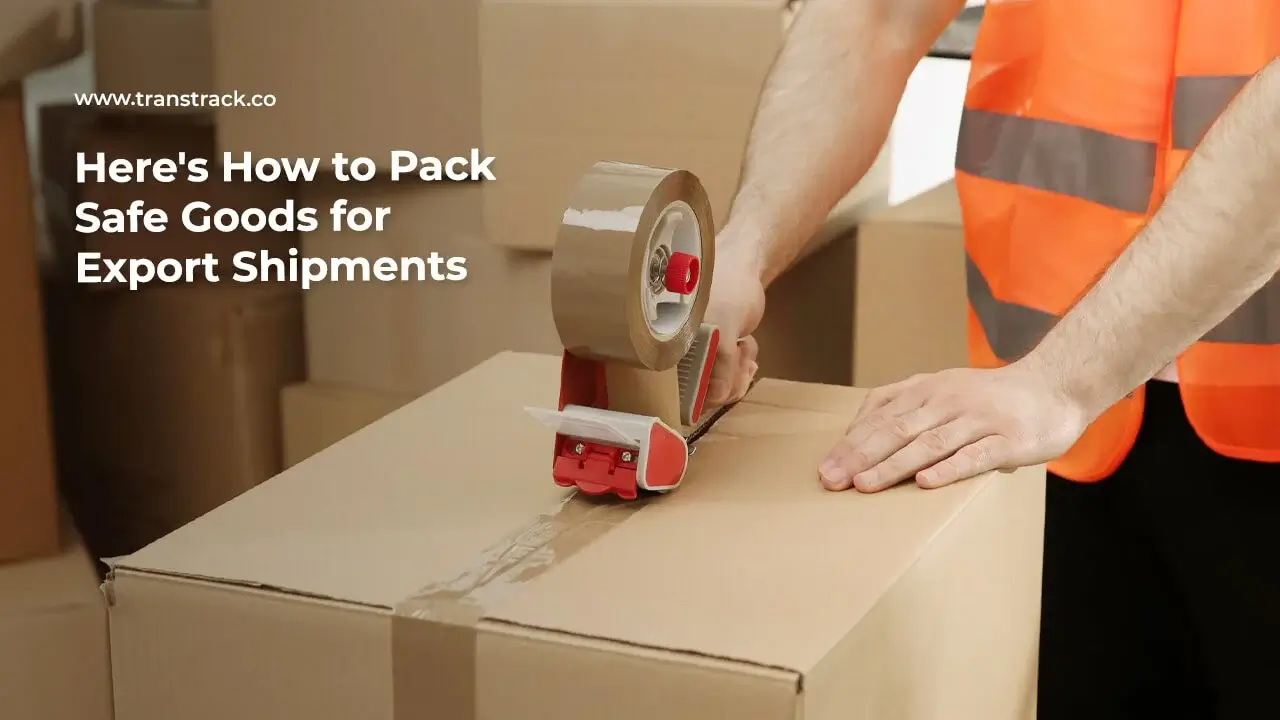Here’s How to Pack Safe Goods for Export Shipments

Export shipments require special attention, especially when it comes to packing. The right way to pack goods not only ensures that the goods remain safe during transit, but can also minimize the risk of damage. Choosing the type of pack that is suitable for the type of goods being shipped also has a significant impact on shipping safety.
Safe export packing can minimize losses, reduce customer complaints, and improve business reputation. How to pack export goods safely? What types of packing can be used? Come on, find out the answer by reading the following article TransTRACK!
Overview of Packing Export Goods
Before we get into the tips on how to pack safely, let’s take a brief look at what export packing is. Pack export goods is an important stage in the international shipping chain that involves preparing and protecting goods before they travel to their final destination.
This process includes not only the selection of appropriate packaging materials but also strategies designed to protect the goods from any possible risks during shipment. From the selection of the right box or container to the use of appropriate protective coatings, every step in the pack process plays an important role in ensuring the integrity of the goods.
The importance of packing export goods lies not only in the physical safety of the goods but also in creating a positive shipping experience. By understanding the specific characteristics and needs of the goods being shipped, exporters can optimize how to pack to minimize risk and ensure the goods arrive safely at their final destination.
Function of Packing Goods
Pack goods are not just routine actions before shipping, but have very important functions. Some of the main functions of pack goods include:
Protection of Goods
The main function of pack goods is to provide protection against damage. Proper packing can protect goods from impact, shock, moisture and temperature extremes that may occur during the shipping process. A good pack must use materials that are adapted to the condition of the goods.
Facilitate Handling
Efficient packing not only involves protecting the goods but also easing the handling process. By providing clear handling instructions on the package such as a “fragile” label, the risk of errors in the logistics process can be reduced. This can also help ensure goods are managed properly and safely during the shipping process.
Compliance with International Shipping Standards
The pack goods function also includes ensuring compliance with international shipping standards. These standards include weight and package size restrictions, as well as specific requirements for the packaging of certain goods. Participation in these standards can facilitate the customs process and minimize the risk of rejection by authorities at the final destination.
Improving Shipment Security
Good packing also plays a role in improving shipping security. Careful packing can help prevent theft or manipulation while the goods are in transit. With quality pack handling, goods become more difficult for irresponsible parties to access.
Types of Export Goods Packing
There are various types of export packing that you can choose from, depending on the type of goods and shipping destination. Some common types of export packing include:
Cartons and Cardboard
Packing cartons or cardboard is a common choice for light to medium items. It provides good protection and is easy to customize.
Wood
Wooden packing is suitable for heavy and bulky items. Choose high-quality wood for optimal strength and durability during shipping.
Plastic
Plastic packaging is suitable for items that are prone to moisture. Make sure to use waterproof and weatherproof plastic to be on the safe side.
Vacuum Packaging
Vacuum packaging is effective for reducing package volume and protecting items from moisture. This type of packing is more often used in food and beverage products.
Tips for Safe Packing of Goods for Export
Now, let us understand some important tips to ensure safe packing of goods for export shipments. Check out the tips below:
Choose Packing Material Wisely
Choosing the right packing material is a crucial first step. Consider the type of goods you will be shipping and choose a material that can provide optimal protection. Cardboard, wood, plastic, or vacuum packaging are some of the types of packing that can be chosen.
Avoid Using Used Materials
Avoid using used materials for packing, especially if the goods being shipped are of high value. Used materials may have already experienced wear and tear and may not provide optimal protection during the shipping process.
Avoid Overpacking or Underpacking
It is important to ensure that the weight and size of the package complies with international shipping standards. Overpacking can increase shipping costs without providing significant additional protection, while underpacking increases the risk of damage.
Ensure Tight and Waterproof Packing
Seal each package well to ensure the safety of the items inside. If the items are prone to moisture, use waterproof packaging or add an extra layer to protect against inclement weather.
Label Clearly
Clearly attach labels that include recipient information, shipping address, and handling instructions. This helps minimize the risk of shipping errors and ensures the package is handled properly.
In the world of international trade, the way goods are packed plays a very important role. By following the tips above and choosing the right type of packing, you can ensure your goods arrive safely at their destination.
As a complement, it is a good idea to consider using a Fleet Management System to optimize the delivery of export goods. This system not only helps in tracking the location of goods in real-time, but also provides analysis on shipment performance, ensuring efficiency and sustainability in the supply chain. For more information about Fleet Management System, you can visit TransTRACK and apply for a FREE demo!
Topic





